chief executive's Review
 |
PETER STAUDE CHIEF EXECUTIVE OFFICER |
Tongaat Hulett responded vigorously with multiple broad-based actions in a year when the business had to deal with the impacts of low international sugar prices, excessive imports into its regional sugar markets and the effects of limited water availability in the Zimbabwean sugar operation. These actions re-enforced and further enhanced its platform to continue delivering on its strategic thrusts.
Sugar production increased by 170 000 tons. The business demonstrated its commitment to significantly lowering its cost base by realising substantial cost reductions and is well placed to continue this process. In Zimbabwe and South Africa, local market protection measures going forward were instituted at the end of the year and responsible sugar pricing has been maintained. Momentum in the value uplift, earnings and cash flows from land conversion has increased significantly. Tongaat Hulett generated profit of over R1 billion from its land conversion activities. The starch operation achieved record operating profit. Overall, it is pleasing to report further growth in operating profit, headline earnings and cash flows. The momentum established in various areas of the business provide the basis for the outlook that earnings for the full year ahead are expected to increase, driven by continuing growth in operating profit and cash flow.
These achievements, coupled with progress that the business has made in the recent past, provide an indication of the benefits that will flow to the business and its stakeholders as it continues to enhance its strategic position.
SOCIO-ECONOMIC POSITIONING
The business has established collaborations with relevant areas of governments, local communities and other key stakeholders in all its areas of operation, as it proactively partners with stakeholders to build value.
- Tongaat Hulett continues to grow its cane supplies in communal areas as well as supporting and developing small-scale growers. The company has reviewed the funding of such initiatives with an increasing emphasis on a combination of grant, development and Tongaat Hulett funding. This type of investment has the effect of creating significant direct and indirect jobs in rural communal areas. In South Africa, the company has planted 24 979 additional hectares to cane over the past three years, which has created approximately 6 250 direct jobs in these areas. In March 2014, the company secured R150 million from the DBSA Jobs Fund in the form of a grant to develop cane in rural areas surrounding Tongaat Hulett mills in South Africa. This grant requires Tongaat Hulett to match the funding and will facilitate the planting of a further 12 000 hectares of sugarcane in rural communities over the next three seasons. In addition, the business has entered into a six year service level agreement with the Small Enterprise Finance Agency (SEFA), which is part of the IDC. In terms of the agreement, Tongaat Hulett is required to administer loans on behalf of the agency to contractors and BEE farmers. Facilities of R50 million have been provided by SEFA.
- On 6 April 2014, the President of South Africa, Jacob Zuma, the KwaZulu-Natal Premier, Senzo Mchunu and a host of dignitaries, together with 10 000 community members, celebrated the launch of the Cornubia Integrated Human Settlement. Tongaat Hulett partnered with multiple organs of local and national government in facilitating the ongoing success of the project that will improve the lives of thousands of people from the lower socio-economic strata. The project is one of three national priority projects and is strategically located being surrounded by Umhlanga, Mt Edgecombe, Phoenix and Verulam/Waterloo. Development on the 1 200 hectare site includes 15 000 fully subsidised houses, associated social infrastructure, commercial and industrial developments, as well as 10 000 market-related houses. The primary objective of the development is to bring people from the lower socio-economic strata and job opportunities into the same location through leveraging, assembling, and systematically aligning multiple institutional, financial, human and managerial resources, in a creative and innovative manner.
- The situation in Zimbabwe is in a constructive phase, with Tongaat Hulett, the government and local communities working together on socio-economic initiatives in the south-eastern Lowveld region of the country. One of the key focus areas remains the orderly development of sustainable private sugarcane farmers and the business continues to see progress in this regard. At the end of the 2013/14 season, some 813 active indigenous private farmers, farming on some 14 000 hectares, employed more than 6 700 people, and generated US$58 million in annual income.
- Tongaat Hulett sold 190 developable hectares (not yet shovel ready) to Dube TradePort in the airport region surrounding King Shaka International Airport. The company is partnering with Dube TradePort and other relevant stakeholders as the region continues to be positioned as a key node for economic development and investment. The Act enabling Special Economic Zones was signed on 23 May 2014, which will further support the region’s objective of economic development and investment.
from existing installed milling capacity, through
increasing the supply of sugarcane to milling operations
- In the 2013/14 season, Tongaat Hulett grew sugar production by 170 000 tons and produced 1,424 million tons raw sugar equivalent. The South African operations, with a 30 percent increase in sugar production, were the major contributors to the overall increase in sugar tons for the 2013/14 season. The increase follows the 28 percent growth in sugar production by the Zimbabwe operations in the 2012/13 season. This 170 000 ton increase in sugar production was the third highest amongst the world’s top twenty sugar producers.
- Tongaat Hulett is now the 16th largest sugar producer in the world.
- The business’s strategy is to facilitate an increase in cane supplies
to grow sugar production from 1,424 million tons to at least
1,816 million tons by the 2017/18 season, through a combination
of improved yields, sugar recoveries and the appropriate
increase in hectares under cane. The rate at which the
organisation is able to utilise more of its installed milling capacity
is directly linked to the pace at which it can increase its supplies
of sugarcane to its mills.
- More than 40 percent of this growth is anticipated to come from cane yields increasing to previous proven and realistically expected levels. The total incremental cost of producing additional sugar, arising from higher cane yields on own estates is around 5 USc/lb compared to the estimated price required to support new sugar production in Brazil of some 25 USc/lb.
- In Zimbabwe, the operations will launch the Kilimanjaro project shortly, which will see an additional 150 farmers plant cane on 3 000 hectares. The combined impact of the SusCo and Kilimanjaro projects means that by the 2017/18 season, some 1 022 private farmers will supply more than 1,800 million tons of cane at a cane yield above 100 tons cane per hectare harvested from 18 880 farmed hectares.
- The company’s strong socio-economic profile in the SADC region, together with its ability to develop rural indigenous sugarcane farmers has played a significant role in the business’s ability to grow sugar production by over 400 000 tons in the past three years, from existing installed milling capacity.
- The increase in revenue that will flow to private farmers as they increase the supply of sugarcane to Tongaat Hulett mills will continue to have a positive impact on the towns and communities that surround company operations. During the year to 31 March 2014, R2,7 billion was paid to private farmers who supplied the business’s sugar operations with cane.
| Tongaat Hulett Sugar production (tons) |
2010/11 | 2011/12 | 2012/13 | 2013/14 | 2017/18 Target |
| Mozambique | 164 000 | 233 000 | 235 000 | 249 000 | 319 000 |
| South Africa | 455 000 | 486 000 | 486 000 | 634 000 | 808 000 |
| Swaziland (RSE) | 54 000 | 59 000 | 58 000 | 53 000 | 61 00 |
| Zimbabwe | 333 000 | 372 000 | 475 000 | 488 000 | 628 000 |
| Total production | 1 006 000 | 1 150 000 | 1 254 000 | 1 424 000 | 1 816 000 |
| Milling capacity | > 2 100 000 | > 2 100 000 | > 2 100 000 | > 2 100 000 | > 2 100 000 |
Sugar Markets and focusing on maximising the revenue that can be earned from sugarcane
- In Zimbabwe and South Africa, revenues were negatively impacted by severe imports into these markets. Going forward, measures implemented by these governments will substantially curtail imports. In South Africa, on 4 April 2014, the dollar-based reference price was increased from $358 per ton (16 USc/lb) to $566 per ton (25,6 USc/lb), while in Zimbabwe the government confirmed that from March 2014 no raw sugar import permits would be issued and sugar imports would attract duty of 10 percent + US$100 (6,3 USc/lb). Mozambique has consistantly been successful in restricting sugar imports.
- As Tongaat Hulett continues to increase its sugar production, the growth of sugar consumption in various countries in Africa provides additional sales opportunities. A prime example of this is Mozambique which has seen a 66 percent increase in the size of the domestic market in the past ten years.
- EU Market access: the review of the regime applicable to sugar beet within the EU has been completed and legislated confirming that sugar beet quotas that limit the quantity of sugar that producers may sell within the EU will be abolished with effect from 1 October 2017. The duty-free, quota-free access for sugar granted to ACP and LDC/EBA countries will remain in force post-October 2017, thereby continuing to provide a preference for ACP and LDC/EBA sugar producers. The EU market is expected to remain an attractive export destination.
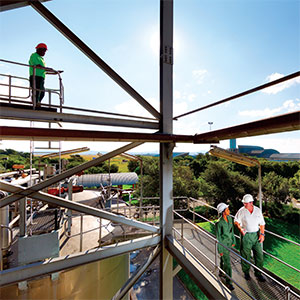 Regulatory frameworks that are conducive to sustainability
and growth of the sugar industries in which the business operates are essential. Tongaat Hulett is continuing to
promote regulatory changes that will benefit all industry
stakeholders in the long term. The company continues
to actively engage with the South African government
regarding the implementation of regulatory frameworks that
will support sustainable investments in renewable energyprojects – renewable electricity and ethanol.
Regulatory frameworks that are conducive to sustainability
and growth of the sugar industries in which the business operates are essential. Tongaat Hulett is continuing to
promote regulatory changes that will benefit all industry
stakeholders in the long term. The company continues
to actively engage with the South African government
regarding the implementation of regulatory frameworks that
will support sustainable investments in renewable energyprojects – renewable electricity and ethanol.- After a number of years of intensive interaction between the sugar industry and government, the possibility for sugar companies to be able to enter the market with renewable biomass electricity generated from sugarcane fibre is closer. The Minister of Energy announced in April 2014 that a Request For Proposal (RFP) for co-generation, under the Ministerial Determination which was signed in December 2012, will be released in due course. This RFP will allow individual companies to make an assessment of whether or not they will submit bids for electricity generation.
- The Department of Energy published mandatory blending
regulations in support of a biofuels industry in August 2012.
The blending regulations supported a 2–10 percent range
for South African produced bioethanol blending in petrol
and five percent for locally-produced biodiesel blending.
The Minister has determined 1 October 2015 as the effective
implementation date for biofuel blends to be available at the
petrol pumps.
- In March 2014, the Department of Energy concluded stakeholder consultation on the position paper dealing with the mandatory blending of biofuels into petrol and diesel. Emanating from this consultation, the Minister has announced in a press release in April 2014 that the Department has considered the inclusion of sugarcane positively as one of the reference feed stocks for bioethanol in the first phase of the programme. The inclusion of sugarcane is expected to contribute towards the growth and development of the sugarcane industry, thus increasing its contribution to job creation, poverty eradication and localisation of supply.
- One percent of the South African petrol pool is equivalent to 180 000 tons of exported sugar (converted into bio-ethanol).
FOCUS ON REDUCING UNIT COSTS OF PRODUCTION
The past year has seen the business’s sugar operations achieve significant success in reducing goods and services, salaries and wages, marketing and transport costs related to the production of sugar. In the business’s key sugar producing countries, the following reductions were realised, after absorbing input price increases and wage rate/salary increases:
| Millions# | 2012/13 | 2013/14 | % Change | |
| Overall | Per ton raw sugar produced |
|||
| Mozambique (Metical) | Mt3 052 | Mt2 785 | 9% |
14% |
| South Africa (Rands) | R2 325 | R2 558 | 10%* |
16% |
| Zimbabwe (US$) | $186 | $146 | 21% |
23% |
| * | Increased sugar production by 30% |
| # | This table reflects the cost of goods, services, salaries, wages, marketing and transport (excluding cane planting costs, off-crop expenditure and depreciation) |
- The focus of reducing costs extended to the business’s 2013/14 off-crop expenditure and consequently there will be a R118 million reduction in the cost being charged to the income statement for the 2014/15 financial year.
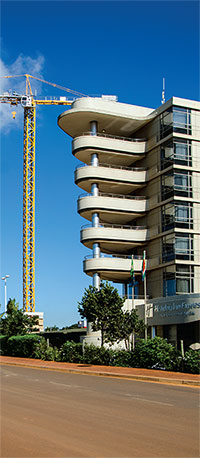 GROWING STARCH AND GLUCOSE PRODUCTION
GROWING STARCH AND GLUCOSE PRODUCTION
- Tongaat Hulett’s starch operation has 20 percent additional
available plant capacity, a well-developed source of raw
materials, a strong South African domestic market presence
and access to regional markets, all of which have the capacity
to increase starch and glucose consumption. Building on a
number of projects already underway, the main focus areas
for the starch operation continue to be:
- Selection of market mixes and the development of new product portfolios to maximise contribution and increase capacity utilisation; ensuring a cost competitive and sustainable source of raw materials.
- Optimising production capacity in downstream channels and overall plant utilisation.
- Improving plant efficiencies and manufacturing costs.
- The business is projecting further volume growth in the next financial year, primarily driven by rising demand in the coffee and coffee creamer sectors and new product development in the modified starch market. In order to support the growth in the coffee creamer sector, an investment of some R100 million in downstream capacity is being made.
- The projected South African maize crop which is now estimated to be 13,55 million tons (harvested from May - July 2014) should ensure that the local maize cost remains competitive with international markets.
UNLOCKING SUBSTANTIAL VALUE
IN THE LAND PORTFOLIO
benefitting from the activities
undertaken over the past few years
The step-up in value realisation and the R1,080 billion earned from sales of 259 hectares of land in the past year is an indication of the momentum established and the way forward.
The profit achieved per hectare of land sold is increasing with the steadily improving land conversion platform and varies based on usage and location. In the past year, the range achieved varied from R2,4 million to R34,0 million per developable hectare.
Land uses and locations and the associated per hectare profits recently achieved are as follows:
| Area | Description | Profit achieved (R million per developable hectare) |
| Ridgeside | Prime, high density, mixed use precinct with sea views | 34 |
| Umhlanga Ridge Town Centre |
High density mixed use urban precinct | 24 |
| Izinga / Kindlewood |
Low density upper market residential suburbs | 3,5 to 5,6 |
| Cornubia Industrial and Business Estate |
Light industrial, logistics, park warehousing and business land uses | 6 to 7 |
| Mount Moreland North |
Long term land, far from shovel ready and without clear land use or infrastructure in place | 2,4 |
Over time, Tongaat Hulett has developed significant core competencies in agricultural land conversion. The synergies between the sugar operations and land conversion and sound and productive working relationships with national, provincial and local governments and communities, in both the rural and urban areas of KZN, are key elements of this. These competencies underpin Tongaat Hulett’s ability to achieve the higher end of the value ranges through creating real value for a wide range of stakeholders.
Converting agricultural land to a “shovel ready” state where it achieves a higher range of value is a process with many facetsincluding agricultural release, spatial policy framing by various authorities, and environmental, zoning and subdivisional approvals by all three spheres of government. The past few years have seen Tongaat Hulett lay the foundations for a vastly improved platform for its land conversion activities, which it will continue to build on going forward. A highlight in this regard has been the unlocking of R22 billion in infrastructure investment in the region where Tongaat Hulett’s land is located.
Tongaat Hulett continues to broaden the range of commercial approaches to transactions from within its land portfolio. This n ow includes large transactions yielding better value through creating longer-term investment prospects for buyers that are not solely dependent on immediate market conditions, for example, the case of the 190 developable hectares sold to Dube TradePort. Transactions where Tongaat Hulett continues to play a role after the conclusion of the agreement, are being developed and tested in the market. These processes de-link the actual sale transaction from the direct development of buildings. The process currently underway to conclude the sale of 42 developable hectares of prime land in Ridgeside is an example of this approach.
International marketing will be initiated in earnest in the coming financial year for the 125 developable hectares of “shovel ready” land in Sibaya at Umdloti, following an assessment that the greatest value is likely to be found internationally.
The next five years should see substantial value unlocked from land conversion activities, benefitting from the activities undertaken over the past few years. While the emphasis remains on value realised rather than hectares sold, sales over the next five years are likely to be in the range of between 1 000 and 1 500 developable hectares, based on current economic conditions. These are likely to come from 3 710 developable hectares of key focus areas out of the total of 8 200 developable hectares of prime land identified and available for conversion.
The primary locations of the aforementioned 3 710 hectares are as follows:
| Area | Focus areas - Developable hectares |
Total developable hectares |
| Urban expansion: Durban to Ballito |
3 144 | 4 600 |
| Urban expansion: west of Durban |
296 | 1 100 |
| Coastal north of Ballito | 270 | 2 500 |
| Grand total | 3 710 | 8 200 |
DEVELOPING AND BUILDING TONGAAT HULETT’S HUMAN CAPITAL
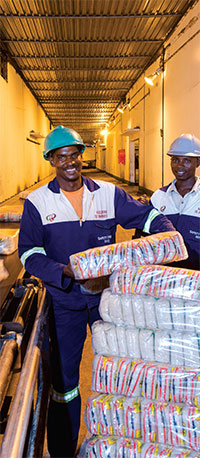 Tongaat Hulett is fortunate to have a deep pool of capable and
experienced people at senior management level. There is a focus
on developing management resources for the future.
Tongaat Hulett is fortunate to have a deep pool of capable and
experienced people at senior management level. There is a focus
on developing management resources for the future.
- Building capacity and capability includes the continuous assessment of the capability profiles of teams and individuals against the required competencies, and appropriate action is taken to address the gaps that are identified. Interventions that have been implemented include the enhancing of roles and responsibilities, making key appointments, leadership development, talent management, job rotation and encouraging employees to embark on self-directed structured development programmes.
- The company is seeing the benefit of its diverse employee base, and is increasingly seeing the benefit of relocating employees within the business’s countries of operation.
STRIVING TOWARDS ESTABLISHING
AN
ORGANISATIONAL SAFETY CULTURE
WITH
A ZERO HARM APPROACH
- Tongaat Hulett achieved a Lost Time Injury Frequency Rate
(LTIFR) of 0,087 per 200 000 hours worked in 2013/14. This was the
company’s best safety performance since the formal introduction
of SHE management systems. This achievement has been driven
by the following key factors:
- Tongaat Hulett has a mature safety management system that provides for a sophisticated risk management program.
- Proactive and reactive interventions entail comprehensive auditing and incident review processes respectively.
- An organisational SHE culture is built around the concept of promoting care amongst employees who are encouraged to look out for each other and being supported by a management team that demonstrates visible felt leadership.
- A comprehensive safety training program at all levels of the organisation is adhered to while safety awareness campaigns are extended to members of the surrounding communities in the spirit of influencing safe behaviour beyond the workplace environment.
- Contractor management controls were stepped up to ensure safety standards are aligned and adhered to.
- Regrettably one employee, Ismael Albano Warrote lost his life in a
vehicle-related incident at the Mafambisse agriculture operation.
Sincere condolences are extended to his family.
| FINANCIAL AND OPERATIONS REVIEW
FOR THE YEAR ENDED 31 MARCH 2014 |
||||
| R15,716 billion | Revenue (2013: R14,373 billion) +9% |
|||
| R2,374 billion | Operating profit (2013: R2,131 billion) +11% |
|||
| R2,934 billion | Operating cash flow (2013: R2,182 billion) +34% |
|||
| R1,080 billion | Land conversion profit from 259 developable hectares |
|||
| 1,424 million tons | Sugar production increased by 170 000 tons |
|||
| R482 million | Starch operating profit grew by 24% |
|||
| R1,106 billion | Headline earnings (2013: R1,067 billion) +4% |
|||
| 360 cents per share | Annual dividend (2013: 340 cents per share) +6% |
|||
The results for the year ended 31 March 2014 were achieved with significantly increased momentum and value in land conversion and development activities, together with a strong performance from the starch operations, at the same time as the sugar operations’ profit being negatively affected by severe market dynamics impacting revenue and cane valuations, partially offset by substantial cost reductions and volume growth.
Starch and glucose processing margins benefitted from local maize that was competitive with international prices, favourable exchange rates and good co-product realisations. Total sales volumes grew by 4 percent, driven by increased exports and growth in the coffee/creamer sectors which offset declines in other local sectors.
In the past year, 63 developable hectares were sold at an average profit of some R7,6 million per developable hectare in the Umhlanga Ridgeside, Izinga/Kindlewood, Cornubia Industrial and Business areas, as well as a site for a major retail facility that links Cornubia to Umhlanga Ridge. The sale of an entire precinct of 6 developable hectares to a single developer in Umhlanga Ridge Town Centre was concluded that will yield some 1 500 affordable rental homes over time and represented profit of R24 million per developable hectare. Tongaat Hulett continues to work together with government and related organisations to capture the synergy of each other’s unique capabilities and to maximise the value for all stakeholders that can be derived from the region between Durban and Ballito. The past year has seen two transactions for the sale of 190 developable hectares to Dube TradePort that, while not yet shovel ready, adjoins the international airport and is of strategic importance to the KZN provincial government’s medium term growth plans.
Operating profit from the various sugar operations totalled R908 million (2013: R1,4 billion). The world sugar price has been at its lowest level in many years. In the regional markets, substantial local market sales were lost to imports as a result of inadequate protection during this period of world surplus, leading to increased export volumes. Exports from Zimbabwe and Mozambique to the EU averaged some 8 US cents per pound lower than the levels in the last two years. Overall, revenue earned and cane valuations were negatively impacted by some R1,5 billion compared to last year, with the cane valuation charge in the income statement being a non-cash item.
Tongaat Hulett’s total sugar production grew by 170 000 tons to 1,424 million tons, compared to the low point of 1,006 million tons in 2010/11. South Africa produced 634 000 tons (2013: 486 000 tons), Mozambique 249 000 tons (2013: 235 000 tons), Swaziland 53 000 tons of raw sugar equivalent (2013: 58 000 tons) and Zimbabwe produced 488 000 tons of sugar (2013: 475 000 tons).
The past year has seen considerable increases in wage rates, particularly at the lower levels where the majority of man hours are worked, as well as price increases for bought-in goods and services. Notwithstanding this, significant success has been achieved to reduce the cost of sugar production in respect of goods, services, transport, marketing, salaries and wages. The unit cost of production in South Africa reflected the benefit of volume growth with limited cost increases.
In Zimbabwe, revenue in US dollars was 25 percent lower than the prior year, as a result of lower local market sales (mainly due to substantially increased imports in the market) with the resultant additional lower priced exports. Cane valuations were impacted by lower prices and the effect of curtailed root replanting as a consequence of the water dynamics during the year – reflecting a US$33 million negative change in the income statement compared to last year.
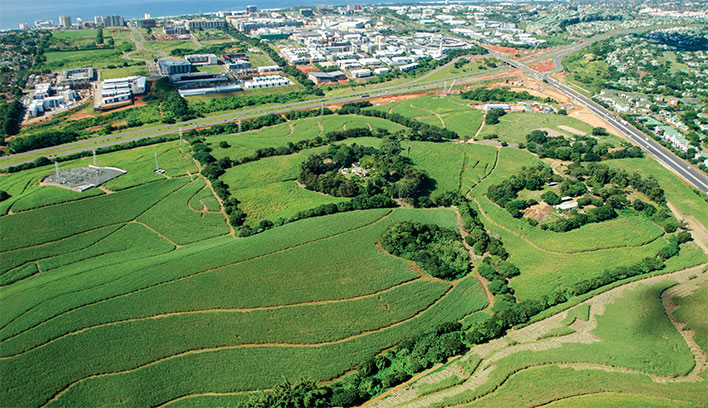
The dams have now recovered, following good rains, to the extent that new root replanting has now resumed. The cost of bought-in goods and services, salaries and wages was US$40 million lower than the prior year. The operating profit from the Zimbabwe sugar operations amounted to US$33 million (R330 million) compared to the last year of US$74 million (R625 million).
Mozambique experienced the same dynamics, with an 11 percent reduction in Metical (Mt) revenue mainly as a result of lower export prices. There was also a negative cane valuation impact in the income statement – amounting to a change of Mt676 million (equivalent of R229 million) compared to last year. The cost of goods and services, salaries and wages was lower than the prior year by an amount of Mt267 million, which was the Rand equivalent of R91 million. Taking all these factors into account, operating profit from the Mozambique sugar operations reduced to R168 million (2013: R421 million).
The South African sugar operations, including the agriculture, milling, refining and various downstream activities recorded operating profit of R340 million (2013: R308 million). The benefit of substantial growth in sugar production was partially offset by the pressure on revenue of lower local market volumes and net prices as a result of import competition, lower export prices and the reduced benefit of cane valuations compared to the prior year. The 30 percent volume growth was achieved with the total increase in the cost of goods, services, transport, marketing, salaries and wages being limited to 10 percent.
The Swaziland sugar cane growing operations reported operating profit of R70 million (2013: R76 million).
The centrally accounted and consolidation items together with lower BEE IFRS 2 charges amounted to R97 million (2013: R53 million). A pension fund recognition benefit in the prior year was not repeated in the current year. Finance costs amounted to R609 million (2013: R560 million) and were commensurate with the borrowing levels earlier in the year.
Operating cash flow exceeded operating profit as the latter includes the non-cash reduction in the fair value of sugarcane. The higher working capital cash absorption in the current period is particularly as a consequence of higher sugar stock levels at yearend in Zimbabwe and increased debtor levels in the South African developments operation following the higher level of land sales. Net cash flow for the year, after dividends, was a positive R300 million, a R480 million improvement over last year. Net debt at the end of the year was R4,32 billion which is lower than the last two years (2013: R4,64 billion and 2012: R4,40 billion).
| OUTLOOK | ||
| Earnings are expected to increase in the full year
ahead, driven by continuing growth in operating profit
and cash flow. |
The current momentum in unlocking value from land conversion and development is expected to continue. Over the next 5 years, sales will come from the urban expansion north of Durban in the Umhlanga and Cornubia areas, coastal lifestyle areas of Zimbali and Sibaya, business and residential development around the airport, coastal development north of Ballito in Tinley Manor and in the Ntshongweni area west of Durban. Sales of between 1 000 and 1 500 developable hectares are expected to be achieved over the 5 year period, based on current economic conditions. Good progress is being made with the targeted sale of 42 developable hectares of some of the remaining prime land in Umhlanga Ridgeside, the area where a net cash profit of R34 million per developable hectare has been achieved. The majority of the land conversion profits for 2014/15 are expected to be reported in the second half of the year while cash flow in the first half of the year will benefit from the land sales concluded towards the end of 2013/14. | |
| Sugar prices are expected to stabilise, at least. Better import protection should lead to lower exports being necessary. The value of standing cane has undergone a write-down in the 2013/14 year, to reflect the current low sugar prices. As yields increase and the hectares under cane grow, a cane valuation gain would be expected. | ||
| The sustainable cost reductions of the past year provide a good base for the next steps in the ongoing cost reduction process and unit costs of sugar production will also continue to benefit from further growth in volumes and better yields, as milling costs and many of the agricultural costs per hectare are mostly fixed. | ||
| Tongaat Hulett is in the fortunate position of having more than 700 000 tons per annum of existing unutilised sugar milling capacity (a R13 billion replacement value) and increasingly good electricity and ethanol prospects. The incremental / marginal profit from each extra ton of sugar is attractive. Sugar production is expected to increase from 1,424 million tons in the past year to more than 1,800 million tons over the next four years, with the focus on increasing cane supplies continuing. | Tongaat Hulett’s positive socio-economic profile in the southern African region continues to grow. In KwaZulu- Natal there are established collaborations with provincial and local authorities in the inextricably linked areas of sugar and cane activities (the planting of 24 979 hectares in the last three years has created some 6 250 direct jobs in rural areas), the development of urban areas (including Cornubia) and maximising the future benefit of renewable energy. The situation in Zimbabwe is in a constructive phase, with Tongaat Hulett, the government and local communities working together on socio-economic initiatives in the south-eastern Lowveld region of the country. This was again demonstrated by the proactive response of the authorities to the recent illegal attempt at land invasion. One of the key focus areas remains the orderly development of sustainable private sugar cane farmers. At the end of the 2013/14 season, some 813 active indigenous private farmers, farming on some 14 000 hectares and employing more than 6 700 people, supplied 1 017 000 tons of cane at a cane yield of 74 tons cane per hectare harvested, generating US$58 million in annual revenue. Current initiatives will increase this, by the 2017/18 season, to some 1 022 private farmers supplying more than 1 800 000 tons of cane at a cane yield above 100 tons cane per hectare harvested from 18 880 farmed hectares. | |
| A period of unsustainably low international prices has been experienced following two seasons of exceptionally good weather conditions for sugarcane growing globally, high stock levels and low government controlled ethanol prices in Brazil. The changes in the EU are ongoing, with some fundamentals remaining in place, including duty free access for Mozambique, Zimbabwe and Swaziland. At present, the EU market position seems to have stabilised at the current lower levels, in anticipation of reform in 2017. | ||
| Recently instituted measures in Zimbabwe to protect the local market against unfair import competition are expected to yield benefits. South Africa will benefit from the recently increased reference price used in the import duty calculation, particularly if the exchange rate remains at current levels. | ||
| The starch operations are well positioned to continue to perform strongly. The latest maize crop estimates are for a larger crop and competitive maize costs are expected. | The business is in a good position to benefit from multiple actions taken across a wide front, with its footprint in six SADC countries, its ability to process both sugar cane and maize, renewable energy opportunities and increased momentum in land conversion. | |
ACKNOWLEDGMENTS AND CONCLUSION
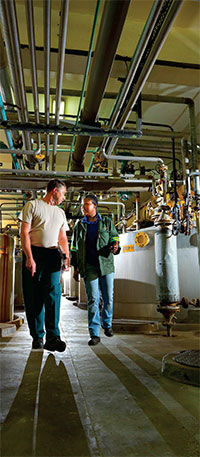 Tongaat Hulett’s 27 sites in Botswana, Namibia, Mozambique,
South Africa, Swaziland, and Zimbabwe have benefitted from the
energy, effort, loyalty and commitment that its more than 35 000
employees contribute on a daily basis. I take this opportunity
to acknowledge and commend you for all that you continue
to do for the company as we progress delivery on our business
objectives.
Tongaat Hulett’s 27 sites in Botswana, Namibia, Mozambique,
South Africa, Swaziland, and Zimbabwe have benefitted from the
energy, effort, loyalty and commitment that its more than 35 000
employees contribute on a daily basis. I take this opportunity
to acknowledge and commend you for all that you continue
to do for the company as we progress delivery on our business
objectives.
Being an agricultural and agri-processing business means that Tongaat Hulett has a significant footprint in the rural communities that surround its operations. The business is committed to working together with small-scale and commercial private farmers, rural communities and governments to grow its contribution to rural development, job creation, skills transfer and in so doing creating sustainable value for all Tongaat Hulett stakeholders.
The business values the support that it has received from its existing long-term shareholders and endeavours to regularly update the investment community as it progresses delivery on its strategic objectives.
During the year, Bruce Dunlop, the executive responsible for the business’s sugar operations in Mozambique, Swaziland and Zimbabwe, retired from the company after 33 years of dedicated service. Tongaat Hulett has benefitted substantially from the commitment and contribution that he made to the organisation during his career, and is in the fortunate position that he continues to provide insight and support to the sugar business in his consultancy role.
The AGM scheduled for 30 July 2014, will see the retirement from the Board of our Chairman, JB Magwaza, after 5 years in the role, having been appointed to the Board in 1995. In its outgoing Chairman, Tongaat Hulett has had a leader whose calmness, strategic acumen and insight have significantly contributed to the ongoing success of the business. We take this opportunity to thank him sincerely for his years with Tongaat Hulett.
The Board has appointed Bahle Sibisi as its new Chairman and we look forward to the contribution that he will make in his new capacity. The ongoing support and guidance that we have received from the Board is highly valued.

Peter Staude
Chief Executive Officer
Amanzimnyama
Tongaat, KwaZulu-Natal
22 May 2014

